INDIAN MASTERS OF THE MODERN & CONTEMORARY SOUTH ASIAN ART
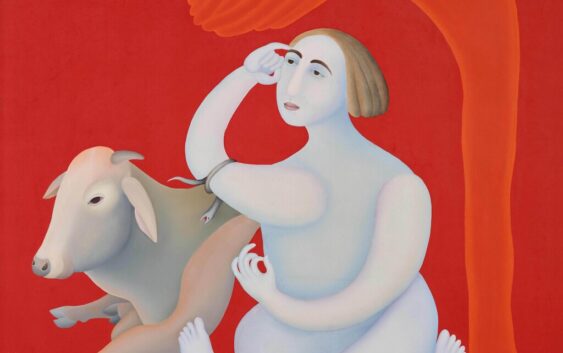
Going back to the 20th century and into the 21st, the live auction on October 24th 2023 by SOTHEBYS will feature South Asian artists who defied the rules and conventions while created their own visual language.
This auction offers a comprehensive overview of works of art from South Asian countries, with a focus on paintings, prints, and sculptures from the countries of India, Pakistan and Bangladesh, as well as Sri Lanka.
The sale is led by a seminal work by Manjit Bawa from 1995 and a rare, early painting by Bhupen Khakhar, titled People at Mosque. An important single owner sequence from the Dartington Hall Trust comprises a masterwork by polymath Rabindranath Tagore and fresh-to-market works of the Bengal School. Other highlights include exceptional works by Sayed Haider Raza, Maqbool Fida Husain, Francis Newton Souza, Ram Kumar, Zainul Abedin and Anwar Jalal Shemza.
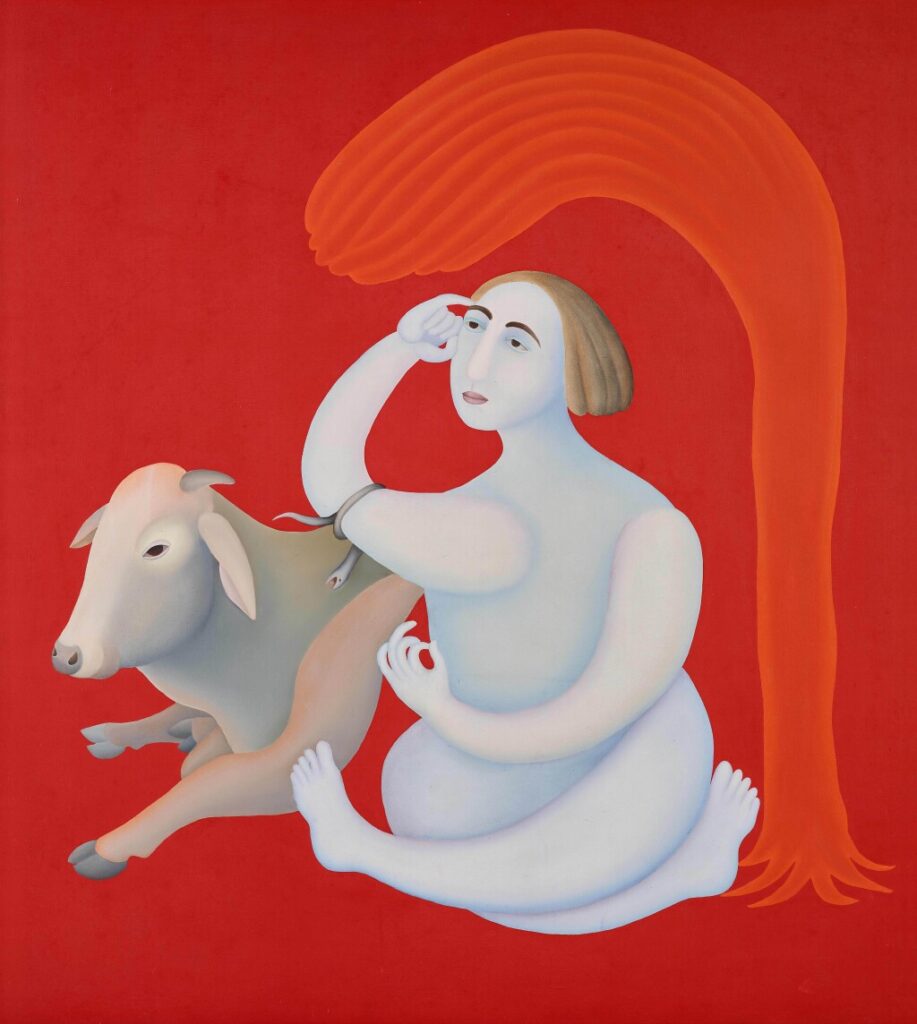
Manjit Bawa
1941 – 2008
Untitled (Shiva)
Oil on canvas
Signed and dated ‘Manjit Bawa 95’ and further signed in Devanagari and Gurmukhī all on reverse
175.2 x 157.4 cm. (69 x 62 in.)
Painted in 1995
His brightly colored works on canvas offer a unique perspective on color, form, and space, allowing the viewer to immerse themselves in the artist’s environment. The artist’s unique use of color was rooted in his formal education as a serigraphist and printer. Bawa’s canvases are characterized by subtle gradations of color and chiaroscuro, which stands in contrast to the simple line and form of his work. These canvases are easily identifiable due to their vibrant colors, which are mirrored in the rich Indian hues.
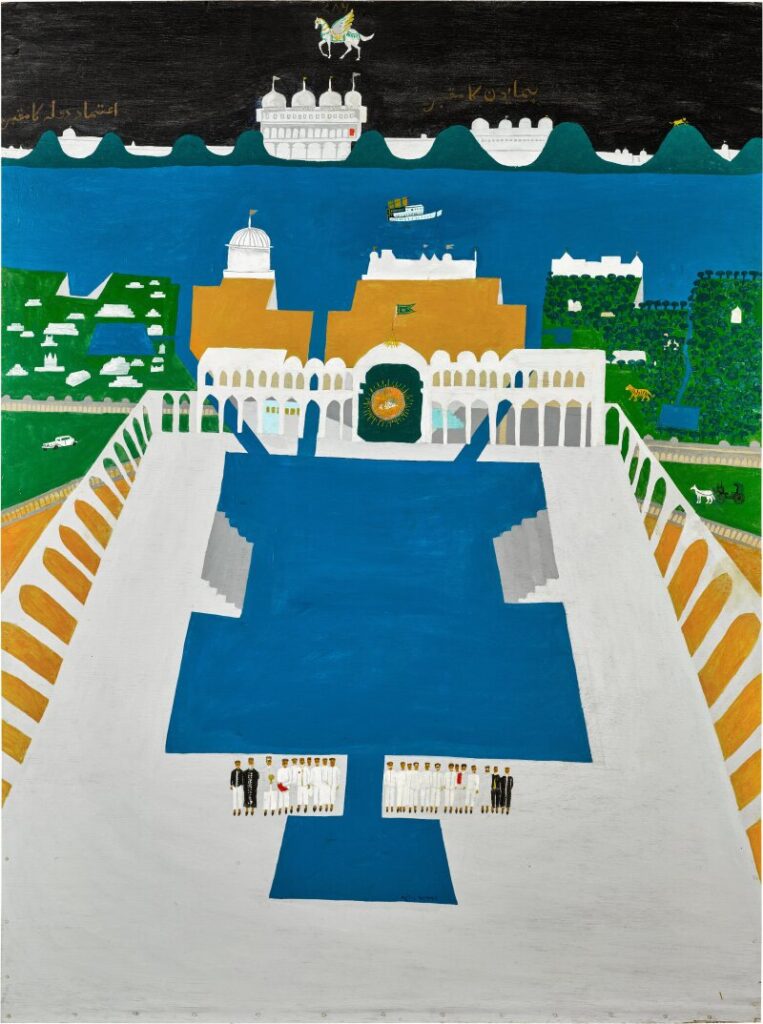
Bhupen Khakhar
1934 – 2003
People at Mosque
Oil on board
Signed in Gujarati lower right and further titled and inscribed ‘PEOPLE / AT / MOSQUE / Rs. 700 / BHUPEN / KHAKHAR’ on reverse
121.9 x 91.3 cm. (48 x 35 ⅞ in.)
Painted circa 1967
Khakhar’s intention was to depict social types in an ironic manner, thereby satirizing the lifestyles and aspirations of India’s middle-class. He consistently challenged the limits of his subject matter, often delving into themes that were controversial and based on autobiographical material.
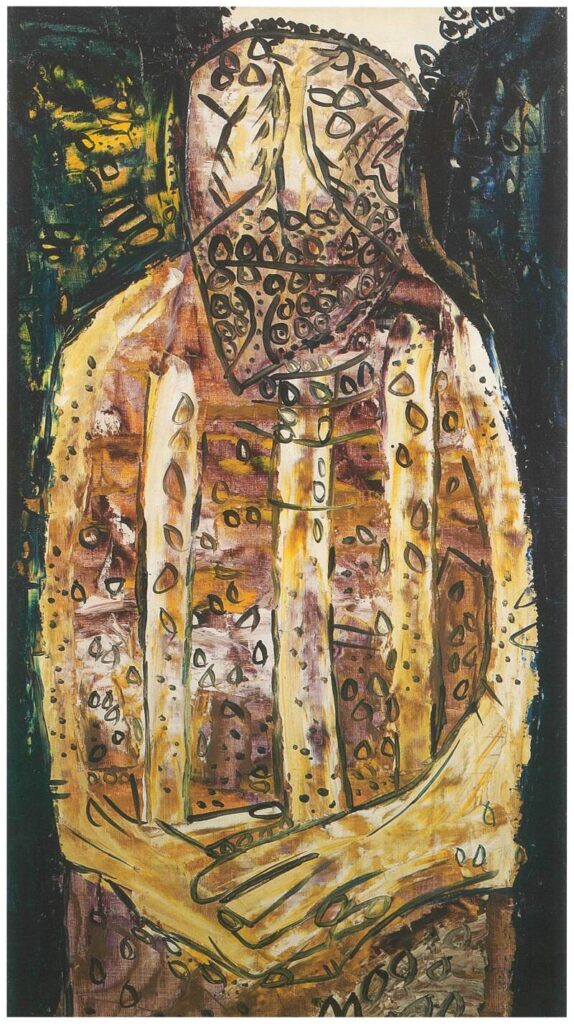
Francis Newton Souza
1924 – 2002
Untitled
Oil on canvas
Signed and dated ‘Souza 1961’ on reverse
104.1 x 53.3 cm. (41 x 21 in.)
Painted in 1961
Francis Newton Souza’s career was marked by a constant pursuit of experimentation. During the 1950s, his bold portraits were characterized by thick, intersecting lines. By the 1960s, his heads had been distorted further, resulting in intricate mutated forms, of which the current work is a prime example.
“I have created a new kind of face… I have drawn the physiognomy way beyond Picasso, in completely new terms. And I am still a figurative painter… [Picasso] stumped them and the whole of the western world into shambles. When you examine the face, the morphology, I am the only artist who has taken it a step further.” (F. N. Souza quoted in Y. Dalmia, ‘A Passion for the Human Figure’, The Making of Modern Indian Art: The Progressives, Oxford University Press, New Delhi, 2001, p. 94)
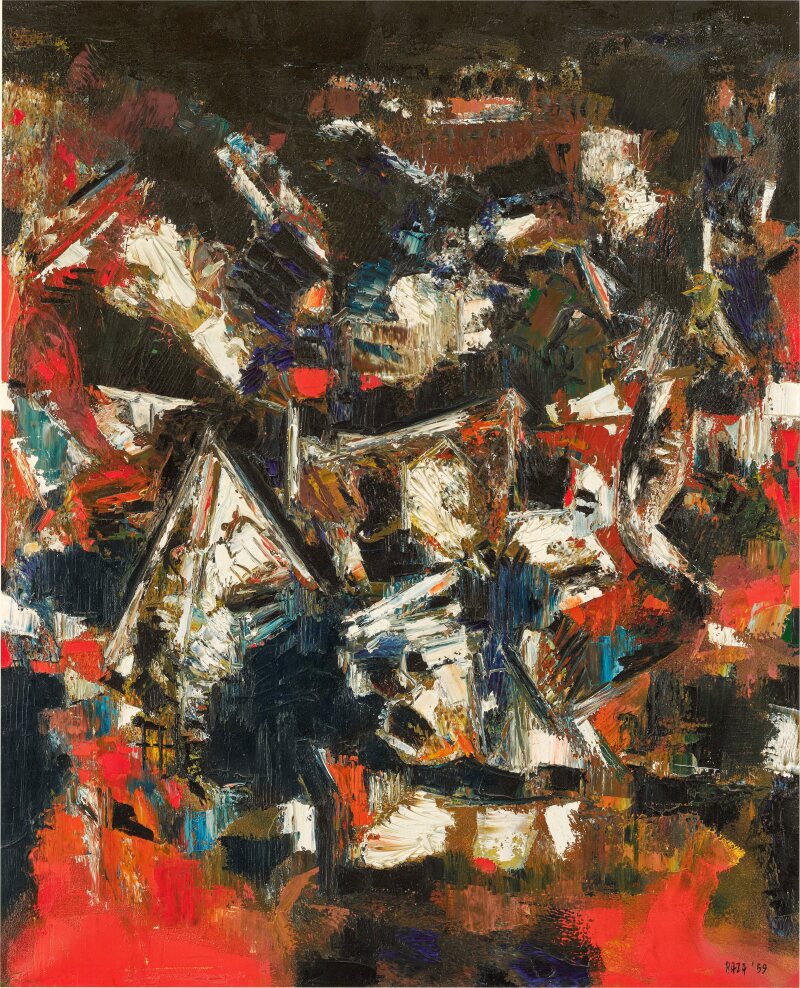
Sayed Haider Raza
1922 – 2016
Crepuscule
Oil on canvas
Signed and dated ‘RAZA ’59’ lower right and further signed, dated, titled and inscribed ‘RAZA / “Crepuscule” / P. 263 ’59 Retouched_ 1961_ R’ on reverse
Further stamped ’20F’ and inscribed ‘709’ on stretcher and bearing Lanyon Gallery stamp on label on stretcher
73.3 x 60.2 cm. (28 ¾ x 23 ⅝ in.)
Painted in 1959
Sayed Haider Raza is reinterpreting the dusk of a rural Southeastern French village, close to the artist’s residence at Gorbio, in this woek, “Crépituse à Ste-Agnes”. The painting is characterized by delicate washes of color that envelope areas of thick impasto, hinting at the canvas’s illumination from the rear. The contrast of tones and textures between the thick blacks and chalky blues creates a liminal sense of twilight and time passing.

